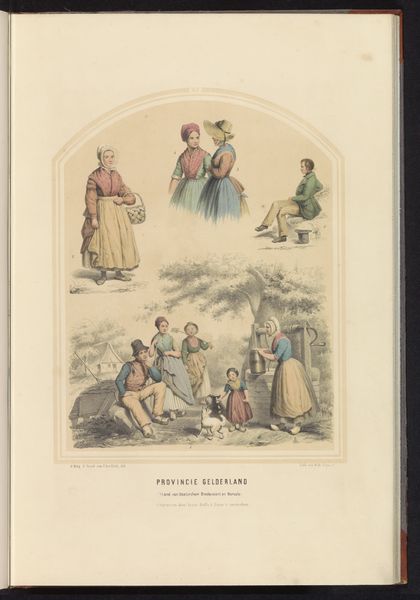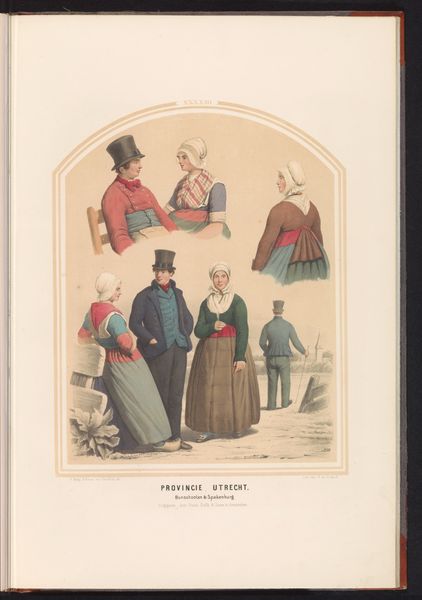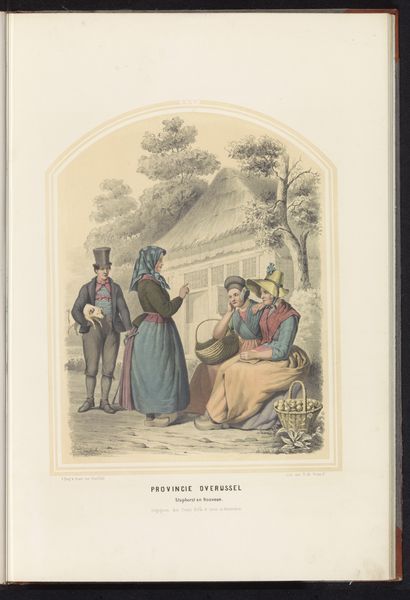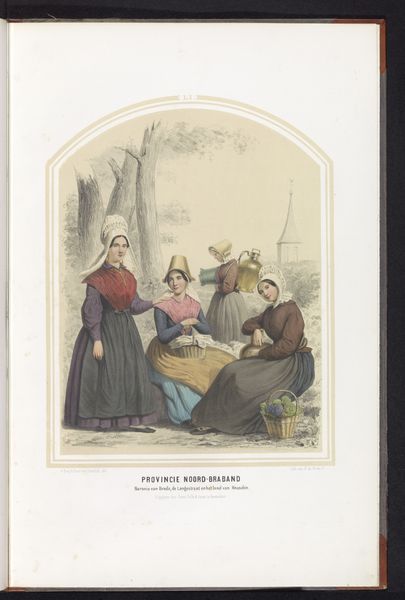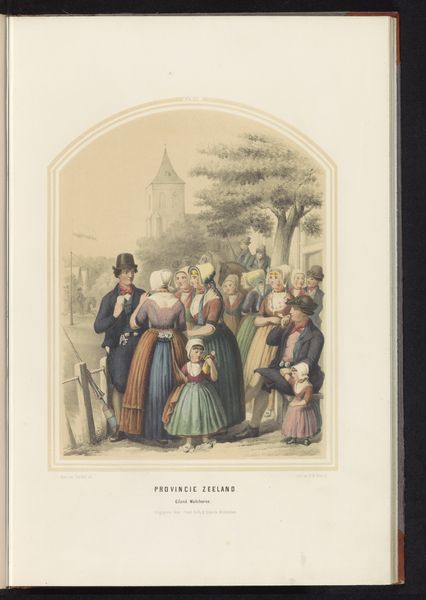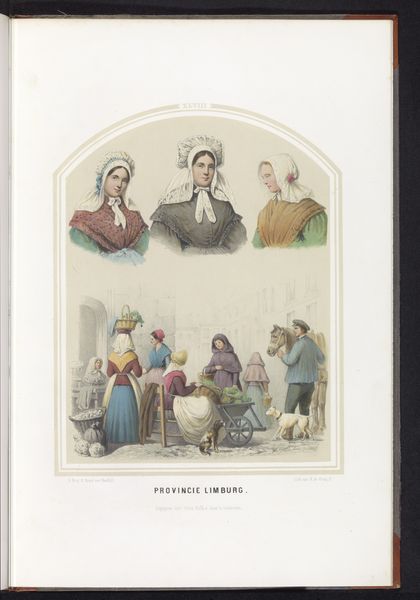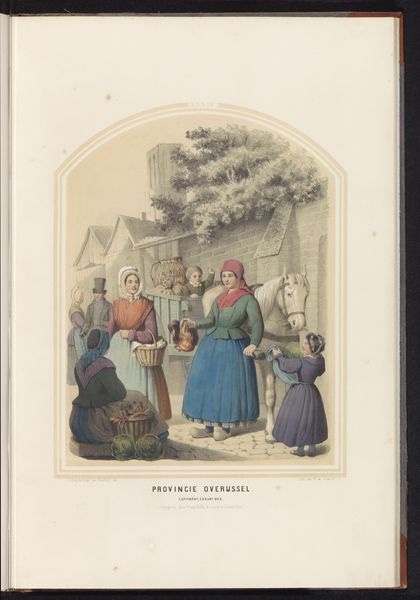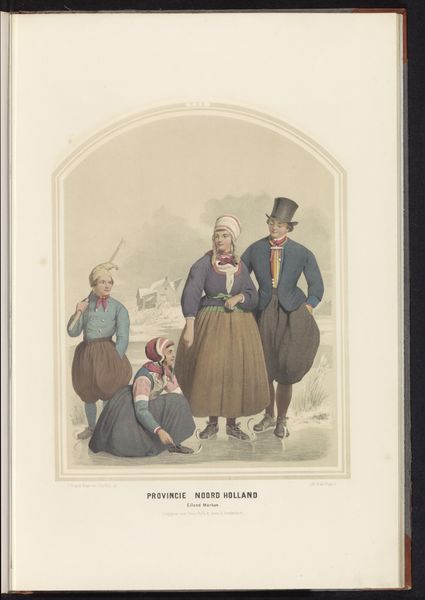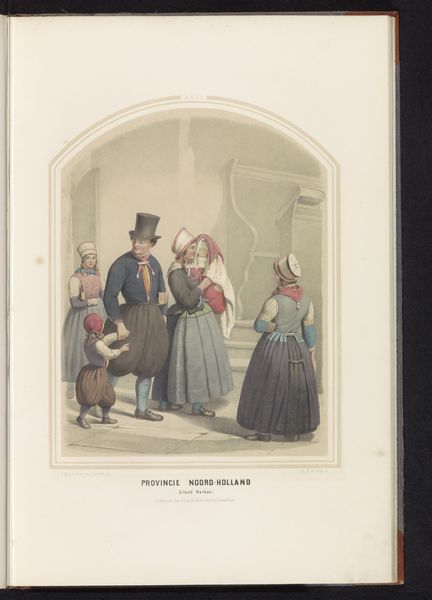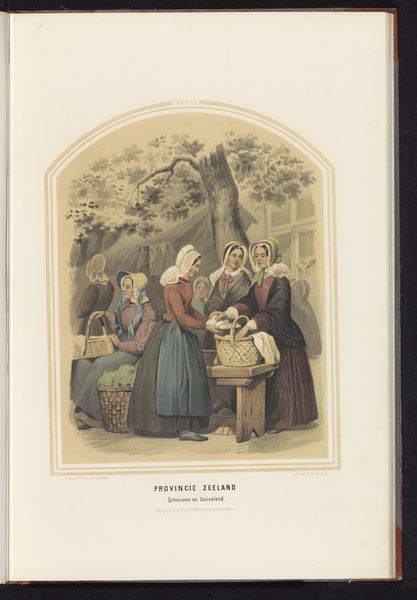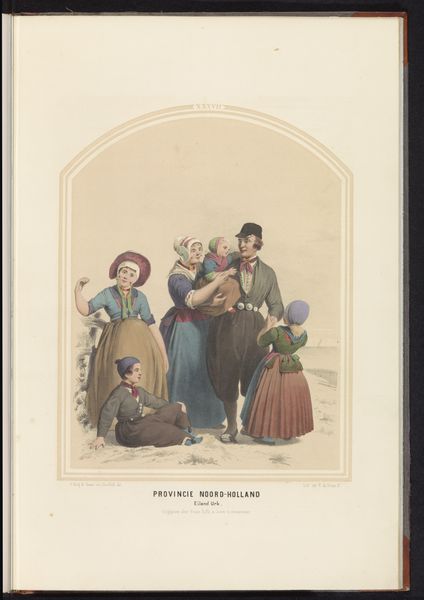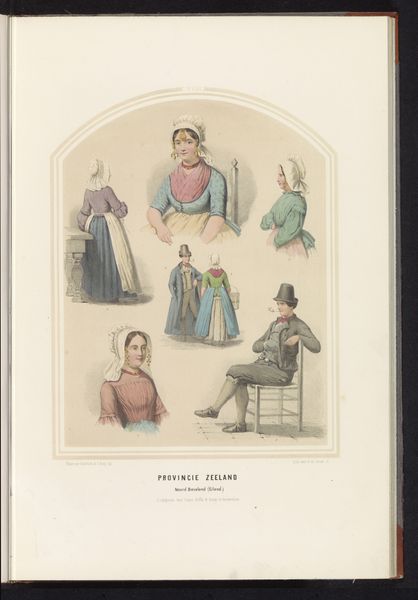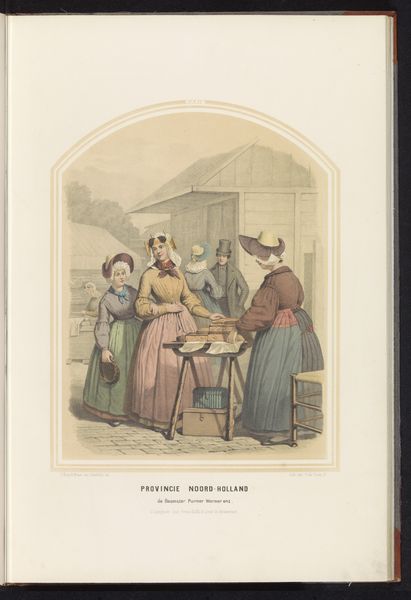
Klederdracht van Overflakkee en Goedereede in Zuid-Holland, 1857 1857
0:00
0:00
Dimensions: height 523 mm, width 350 mm
Copyright: Rijks Museum: Open Domain
Curator: This watercolor drawing, created in 1857, depicts traditional clothing from Overflakkee and Goedereede in the province of South Holland. Editor: The scene has a sort of… earnest quality. It presents a picturesque version of provincial life, doesn’t it? The pastel palette and the arch shape on top contribute to the sense of harmony, even naivete. Curator: Indeed. And we see not just an aesthetic portrayal but an articulation of social identity through clothing. Note how each garment symbolizes local values and gender roles within the communities depicted. Editor: Exactly! Take the bonnets, for example. They frame the face, drawing attention to the gaze and therefore implying status but also an obligation. I am fascinated by the shapes these hats create. It communicates inclusion, or possibly even exclusion depending on its construction. Curator: Absolutely. The symbolism in the garb extends to the choice of colors as well, and the specific fabrics signify status, kinship and religious associations. Furthermore, such representation contributes to our understanding of rural identity in the context of Dutch nation-building at the time. Editor: So we’re considering the subjects not as simply 'women of Overflakkee,' but representatives of local, rural, specifically female identities. The artist utilizes them as stand-ins for that identity through symbols. The picture also speaks about childhood. Curator: Considering the historical context, this piece invites discourse around power, representation and even the romanticizing of rural existences at a time of significant industrial and political transformation. These carefully constructed scenes often obscure lived realities for the sake of reinforcing particular national narratives. Editor: It gives one a great deal to think about, both within the cultural landscape of its time and how these symbolic structures continue to evolve. Curator: Indeed. Examining the drawing through an intersectional lens allows us to tease out a number of narratives at play.
Comments
No comments
Be the first to comment and join the conversation on the ultimate creative platform.
